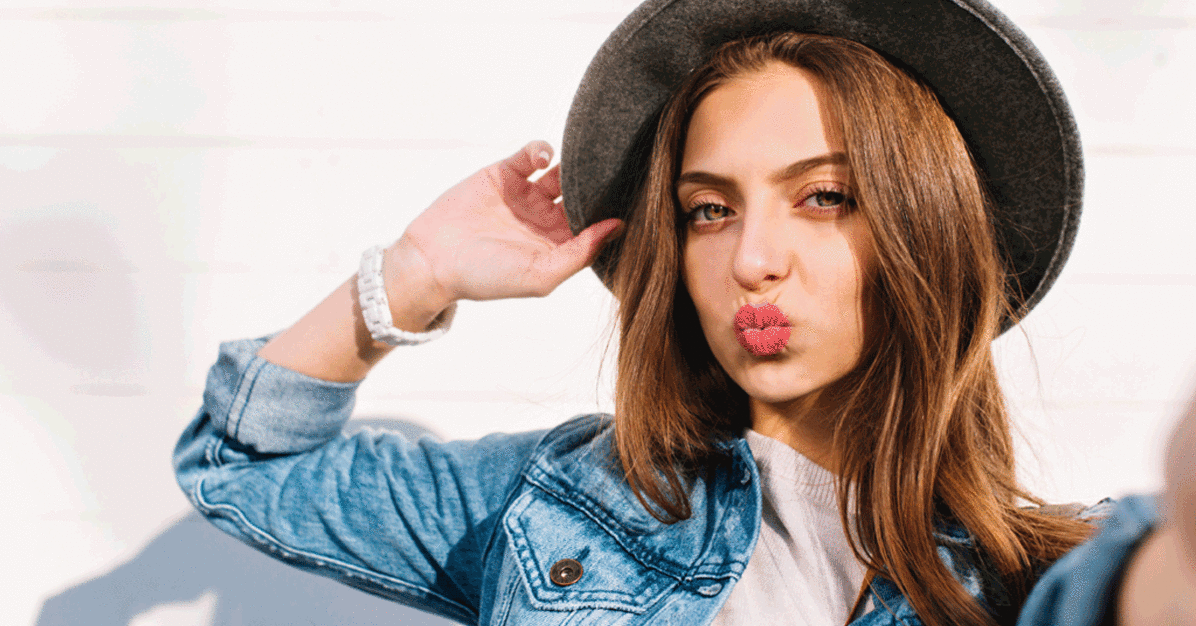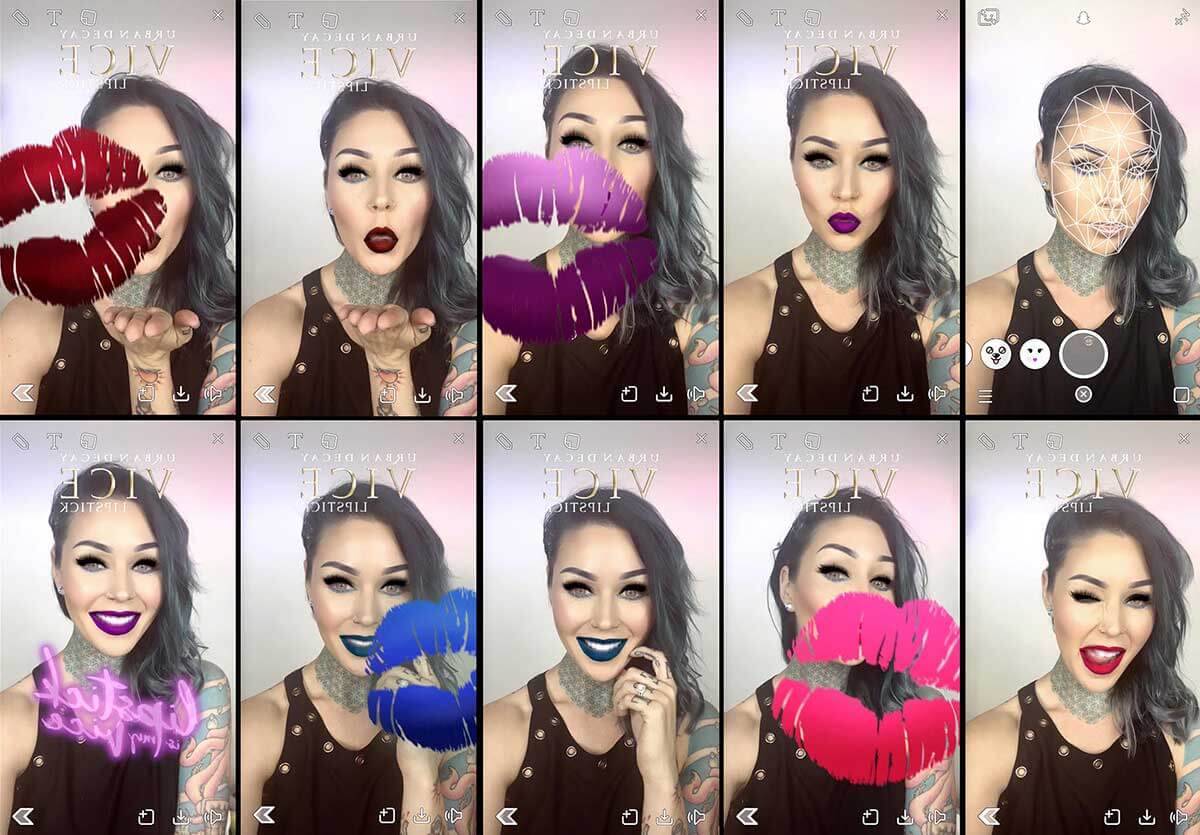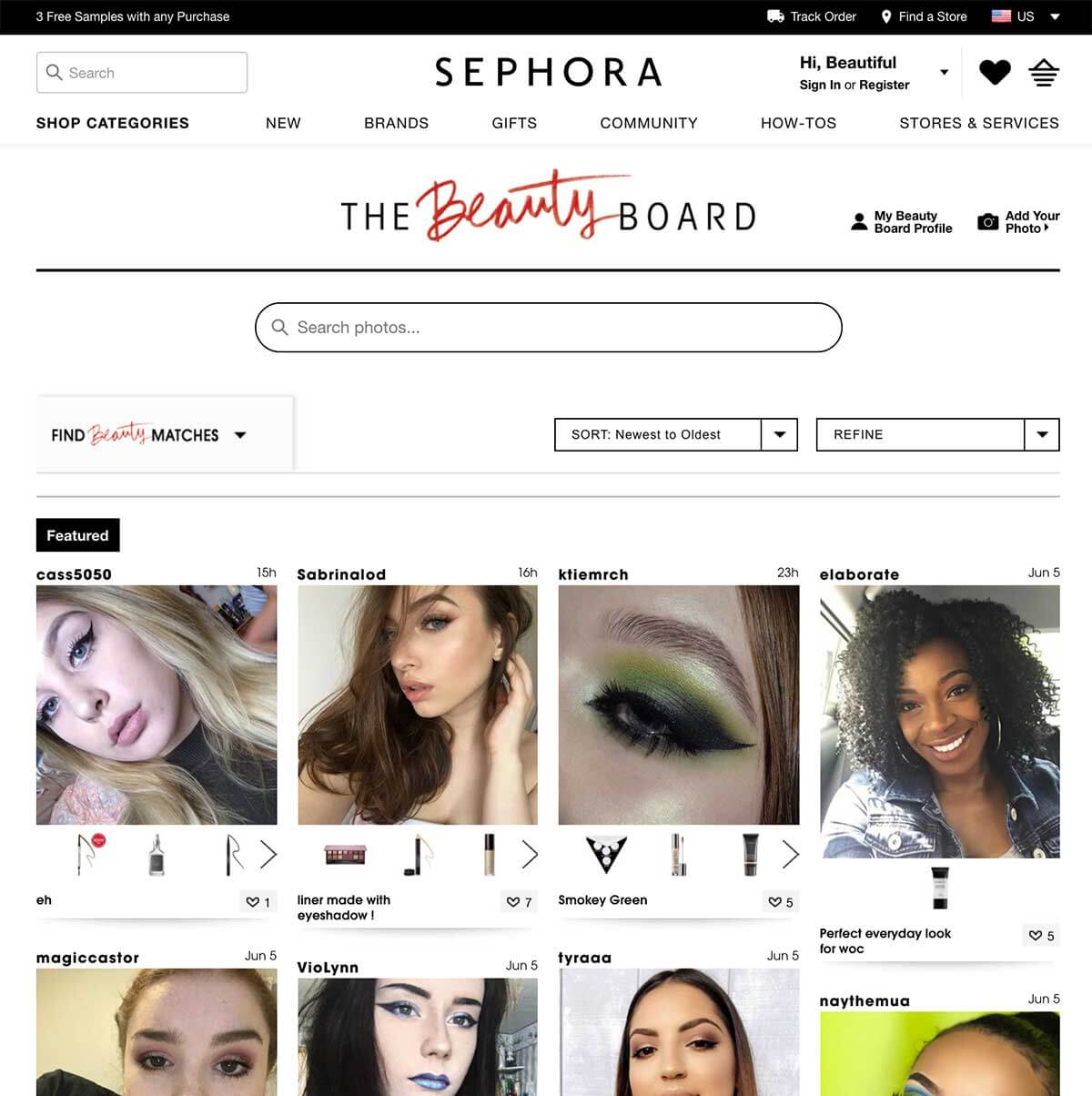Makeup brands that SLAY on social do these 5 things

To say I love makeup would be a bold understatement. In fact, the first and only time I ever was sent to the principal’s office was for putting red lipstick on at my desk… in the third grade. While industry trends have come and gone since then, cosmetic brands are more relevant than ever before, and the way that these brands engage their consumers on social is a determining factor in their success. The brands that stand out in the perfectly-contoured crowd have these five things in common with their social advertising.
1. They’re boldly interactive
The best brands in makeup are some of the most interactive. Not only are they quick to respond to comments (what lipstick is that model wearing?) but they encourage followers to interact with them as well. Retailers like Sephora even offer followers the chance to get featured on their “makeup of the day” Pinterest page, if they submit a look.
Brands are also leveraging more advanced technology in the pursuit of bold interaction. In a time where facial recognition technology is more advanced than it ever has been before, cosmetic brands are taking note and leveraging it in their social campaigns. Last year, cosmetic brand Benefit ran a sponsored Snapchat lens around the launch of its “ka-BROW!” line—makeup products designed to give women the boss-lady brows of their dreams, while Urban Decay and L’Oréal have similarly used Snapchat’s face-altering features, like lenses and filters, to literally alter customers’ faces. And in an industry where, well, altering people’s faces is kind of the idea, interaction is key.

2. They have fans, not just users
Cosmetic brand Tarte is a perfect example of a beauty brand with fans. Its customers are more than “just users,” they’re such fan girls (and boys) that they call themselves “#Tartelettes,” and let’s be real, you know you’ve really made it when they make your name into a hashtag (#beliebers, anyone?).
Tarte structures a lot of its hashtags on Instagram and Twitter like this, where the brand’s name is cleverly incorporate into the theme of the post, and fans actively incorporate them into their own social jargon. For example, new makeup looks are #worksoftarte, and vacations are #trippinwithtarte. Tarte has truly created a culture around their brand, and among notoriously fickle makeup mavens, it’s kind of a big deal. #justsaying.
3. They operate omnichannel
Ahh, Sephora— the happiest place on earth and the mecca of all things makeup. Aside from being a cosmetic industry giant, Sephora also has one of the most robust omnichannel strategies around.
Not only do they craft unique content to compliment Pinterest, Instagram, Facebook, YouTube and Snapchat, but they leverage this to drive sales both in-store and online. Sephora will often encourage social followers to also check out the Sephora app, where they can do things like watch tutorials, read on tips and tricks, or, of course, shop online. But Sephora’s app also allows users to virtually try on hundreds of different shades of lip, cheek and eye colors, piquing interest in brands and products that may not have initially interested them through regular online browsing. The logical next step is to, of course, try on in store. The app conveniently lets users know if the product they’ve just viewed is available at store near them. Sounds like a winning formula to me.

4. They don’t just post about product
One glittery ad is eye-catching. Many glittery ads become hum-drum, or like a Kes$ha song… and that’s not the look we’re going for here. The type of person who is following one cosmetic brand is probably interested in a few other brands or retailers as well.
Instead of constantly posting about the latest and greatest product or serving ads featuring only a product, retailers like Covergirl make an effort to leverage creative that showcases product in an indirect way, like promoting Katy Perry (one of their muses) and her upcoming tour. Naturally, as a Covergirl spokeswoman, the image features Perry with inspired makeup reminiscent of a product post, but it’s not one. The brand also adds variety to its feeds with relevant quotes or memes, creating a more natural (read: less blatantly promotional) integration into users’ feeds.
5. They leverage UGC
Brands that incorporate UGC, or user-generated content, get the same benefit of beautiful creative imagery, with all the credibility that comes along with a trusted friend’s endorsement… and the numbers don’t lie. According to a Kleiner Perkins Internet Trends report, effective UGC can generate 6.9X higher engagement than brand-generated content on Facebook.
One more nod to Sephora (because Sephora…) who does UGC better than most. Sephora features user-generated makeup looks on its social channels, and then features these images on its online Beauty Board, where customers can buy the exact products worn in the UGC image. How easy is that?

Makeup trends will come and go, but some things, like a solid social strategy of a bold red lip, are timeless.
Cosmetic brands that slay on social are interactive, build a fan-base, operate with an omnichannel strategy, and focus on more than just their own product.